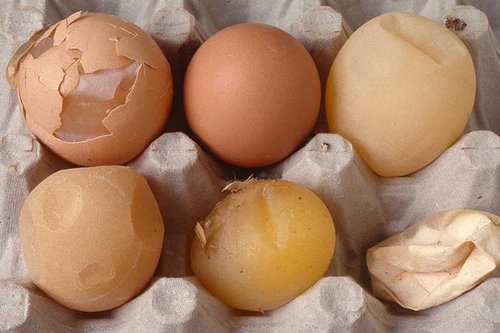
Published on Feb. 9, 2021
Egg Drop Syndrome
Egg Drop Syndrome (EDS `76) is a disease caused by an adenovirus affecting laying hens characterized by a fall in egg production or failure to reach the peak of lay. The main reason behind this lack of eggs is the production of a significant number of soft-shelled and shell-less eggs, which can be eaten by hens or lost in manure, leading to a reduction in saleable eggs.
The Egg Drop Syndrome Disease is much more severe in broiler breeders and brown egg layers than in white egg layers.
The egg drop syndrome virus (EDSV) was originated from ducks and it was likely introduced to chickens through a contaminated vaccine. Ducks and geese are natural hosts for the virus and can be asymptomatic carriers.
EDSV can be vertically transmitted, from infected breeders to progeny: virus can remain latent in these chicks hatched from infected eggs and be activated when the flock comes into lay. However, the most common method is horizontal transmission, through contaminated eggs or equipment (egg trays, crates, trucks…), as the virus is present in faeces and oviduct exudate. Direct or indirect (water contaminated by droppings) contact with domestic or wild waterfowl can also be a way of transmission.
Spread of the disease is slow and can take several weeks within a cage house or house to house.
Clinical Signs
Affected flocks show first a brief loss of egg shell color followed by production of thin-shelled, soft-shelled and shell-less eggs. At early stages birds can suffer from transient diarrhea or appear depressed, but these signs are not consistent, and otherwise birds look healthy and mortality is not increased.
If the flock is vertically infected or infected at start of lay, it will fail to achieve a normal peak; if infected at later age, drop in egg production will be variable, ranging from 10 % to 40 %. Many eggs will be lost as they will be eaten by the hens, can get crushed on the litter or will fall on the manure belts or pits. Outbreaks usually last 4 to 10 weeks before production returns to normal.
At post-mortem, there are no characteristic gross lesions. Microscopic lesions are limited to shell gland.

Courtesy of Dr. Joan Smyth. MSD Veterinary Manual
Diagnosis
EDS is suspected when there is a sudden drop in lay with increased production of soft-shelled and shell-less eggs in apparently healthy birds. However, those abnormal eggs are easily missed, as they are eaten and only membranes can remain, so identifying this sign requires a thorough inspection.
For differential diagnosis, EDS should be distinguished from Infectious Bronchitis, by absence of respiratory signs and typical misshapen eggs, and Newcastle disease and Avian Influenza, by absence of illness. Severe vitamin D3 deficiency also causes a very similar clinical picture.
Serologic tests of choice for diagnosis are HI and ELISA. PCR can be used from cloacal swabs or samples from shell gland. A limiting factor for diagnosis is proper selection of infected birds, due to absence of clinical signs.
Control & Vaccination
There is no effective treatment for EDS. Prevention strategy should be based in strict biosecurity, proper cleaning and disinfection of equipment in contact with eggs, specially egg trays which are known to be a major factor in spread of the disease. Reuse of paper egg trays should always be avoided.
Chicken flocks should not be in contact with waterfowl or potentially contaminated water with their droppings.
Inactivated vaccines are available: they are usually administered at the end of the rearing period. Breeding stock is normally vaccinated to prevent vertical transmission as well as to avoid production losses. Commercial layer flocks are also vaccinated to prevent clinical disease, but vaccines will not prevent virus shedding.
